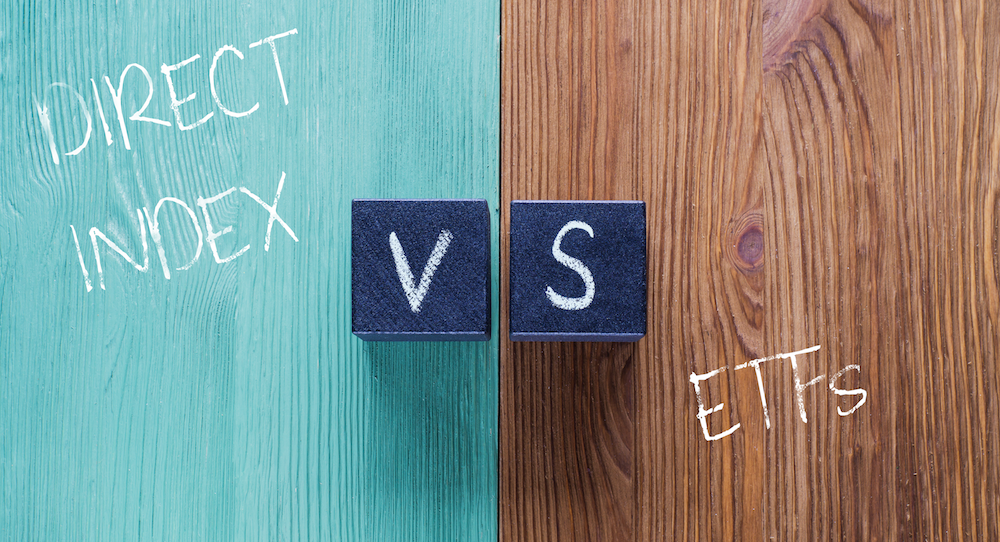Direct Indexes are less expensive than ETFs to launch and maintain.

Direct Indexes, where investors directly own shares in a basket of stocks that track an index, outperform ETFs on an after-tax basis. Given that ETFs beat 80 - 90% of all active investments, that’s a big plus for Direct Indexes (we wrote about this in an earlier post Direct Indexes are Better than ETFs). But Direct Indexes are better than an ETF in another important way: they have the potential to be much less expensive.
Direct Indexes have lower launch and fixed costs than ETFs
According to Cynthia Murphy and Dustin Lewellyn at ETF.com, creating a new ETF costs anywhere between $100K and $500K1 and takes, on average, three to six months.2 Once it’s been created, fixed maintenance costs will run another $200K or so a year.1 It adds up to somewhere between $300K and $700K in expenditures your first year, above and beyond licensing fees that may be payable to index providers or any R&D costs.
In contrast, setting up a new Direct Index is just a matter of creating a new data file. Total start-up costs (other than R&D and licensing expenses): $0.
So, that’s $300K to $700K in start-up costs for an ETF vs. $0 for a Direct Index. Score one for Direct Indexes. And it’s a big reason asset managers are interested in Direct Indexes.
Direct Indexes and ETFs have similar costs for managing portfolios
So far, we’ve just been talking about start-up and fixed expenses. Actually managing assets imposes additional costs. You might think that ETFs would be easier and less expensive to manage. After all, with an ETF, there’s only one portfolio to worry about while with Direct Indexes you may have to manage many thousands of portfolios. This is where automated rebalancing software, like ours, comes into play. The whole purpose of automated rebalancing software is to take a single “master” portfolio and automatically translate its trades into customized, tax-sensitive trades for any number of “follower” accounts. Automated rebalancing software is what makes Direct Indexes a viable alternative to ETFs. For the portfolio manager at the top, there’s little difference in time or cost between managing one portfolio—or thousands.
Where Direct Indexes are currently more expensive than ETFs
As noted above, relative to ETFs, Direct Indexes have lower launch and fixed costs, and similar portfolio management costs. But there are still two areas where Direct Indexes are more expensive: account opening, and per ticket commission charges. Direct Indexes also have higher investment minimums. However, technology is rapidly breaking down these remaining barriers. Let’s look at each in turn:
- Account opening: With Direct Indexes, you’re not managing a fund or commingled vehicle—you're managing a separate account for every investor. With some custodians, this is still a clumsy, partly manual, and somewhat expensive process. But this is changing. Apex Clearing is the current leader, with real-time account opening and funding. Other custodians are following Apex’s lead.
At the same time you’re setting up a subaccount, you need to establish authority to manage the investor’s account. Your legal status is that of a subadvisor, with limited power of attorney to trade the account. Some advisory firms build the authority to appoint subadvisors into their standard client contract, which makes everything easy. Otherwise, the authorization needs to come directly from the investor. This, too, can be handled electronically, but it can take time. - Per ticket commissions charges: (e.g. $4.95 a trade) make Direct Indexes more expensive to trade than an ETF. Buying a100-stock Direct Index will cost 100 times what it costs to buy an ETF—at $4.95 a trade, $4.95 for an ETF vs $495 for a Direct Index. The superior after-tax performance of Direct Indexes still make them a win for sufficiently large accounts, those above $50,000. But Per Trade commissions are a barrier to the use of Direct Indexes with smaller accounts. However, AUM-based trading fee structures, as low as 4 bps, increasingly offered by custodians, eliminate this problem. With AUM-based trading fees, the cost of trading, as a percentage of portfolio value, is the same for all accounts, regardless of size.
- Higher investment minimums: You can buy one share of most ETFs for less than $100. With Direct Indexes, the need to buy at least one share of, say, 100 stocks, sets the minimum purchase size much higher—around $25,000. Fortunately, the ability to purchase fractional shares solves this problem. Here again, Apex Clearing seems to be leading the way, allowing investors to own 1/1,000 of a share, lowering the entry point for direct indexes to as little as $25. Other custodians will follow.
These three barriers to wider adoption of Direct Indexes—account opening costs, higher investment minimums, and per ticket commissions charges—are already solved at new custodians. But they remain a barrier to Direct Indexes becoming as simple to buy and sell as an ETF. As the ability to streamline these processes spreads, Direct Indexes will be better than ETFs in every dimension: they’ll generate higher after-tax expected returns. And they’ll be less expensive.
For more on this topic, check out Direct Indexes are Better than ETFs
1 "Launching An ETF Is No Cheap Endeavor" ETF.com October 17, 2016
2 "Here's How To Launch An ETF" May 09, 2016


COMMENTS